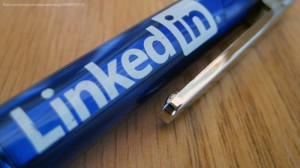Maybe, but first let’s define what it is.

It wouldn’t be difficult to assume that People-Based Marketing (PBM) is taking over.
Ad tech firm Sonobi, for instance, recently announced a PBM consortium of more than a hundred major publishers, representing over 150 million users.
Last year, Time Inc. bought Myspace-owning Viant. The combined company claimed it had access to more than 1.2 billion identified and registered users, with over 200 million in the US alone. LiveRamp, ONE by AOL/Verizon and Publishers Clearing House are among other PBM data platforms that say they can each reach hundreds of millions of users.
To paraphrase the late Sen. Everett Dirksen, a few hundred million here, a few hundred million there, and pretty soon you’re talking about a lot of people.
While talk about PBM is rising, third-party cookies — the linchpin for ad targeting on computers based on demographics or digital behavior — are steadily losing ground because of counter-actions by Apple, Google and the upcoming General Data Protection Regulation.
This is all resulting in “a crushing wave” toward PBM, LiveRamp CMO Jeff Smith told me.
But what kind of wave is it?
As it turns out, PBM is rarely defined satisfactorily. Articles on the subject often contain references to leveraging first-party data and customer relationship management systems, but are we only talking about logged-in users? That’s a fairly limited universe.
In talking with several PBM providers — each of whom has a somewhat different interpretation — a few themes have emerged.
Sometimes eating ice cream
Conceptually, PBM refers to advertising and marketing that is directed at individuals, real people, and not just cookies or single mobile device IDs that have a few browsing behaviors or other data attached to it.
In other words, these are real-world individuals who live outside the digital realm, occasionally taking walks down the street and sometimes eating ice cream. They aren’t just a cookie or a mobile device ID — assumed to be a human user — which once went to a web page showing red sneakers and, at another time, downloaded a PDF about what to see in Hawaii.
To keep these identities apart from cookies or singular device IDs, PBM providers point — in varying degrees — to three main anchors.
Keep in mind that an “identity” does not mean that the person is named. Although the real name is present somewhere, identities are often tracked, matched or shared using anonymized labels, like User 123. Even anonymized, these are still identities of actual people.
To Facebook, the key anchor is the login. The social giant is credited with popularizing the term, “people-based marketing,” which helped them promote the idea that advertisers on their platform can direct messages at Facebook profiles and histories that reflect actual people. (This assumes, of course, there aren’t any catfished profiles.)
Logins also help sites or apps leverage their first-party data, which is data the publisher owns about its users and customers and which is often stored in a CRM. Those users/customers can be definitively identified when the user/customer logs onto that publisher’s site/app.
Similarly, sites that accept Facebook or other social logins can utilize those social profiles for PBM, as permitted by the user.
If a user logs into the same site on a smartphone and again on a laptop, a brand can recognize that those two devices are owned (or at least used) by the same individual. This device graph is the second major identity anchor.
The persistent ID
Cross-device identification providers, like Drawbridge, can also determine with high accuracy which multiple devices you use even if you don’t log into the same branded property on each device.
They can track common IP addresses, browsing behavior, locations where the devices reside at night and other factors to make the connection between your smartphone, your laptop, your tablet, even your connected TV — and, someday, your smart refrigerator or smart thermostat.
Cross-device identity can be as powerful an anchor as a login. Drawbridge Senior Marketing Manager Mike Murphy pointed out that if a travel company is confident that the same user who searched for trips to Paris on this smartphone also owns this laptop, they can show ads for Paris as soon as the user visits that travel company’s website on the associated laptop. No login would be needed to certify identity across devices.
But there are also data layers outside of devices, such as when you use your credit card in a physical store. For that, there’s the third identity anchor — the persistent ID.
LiveRamp is built around the persistent ID, which is a definitive connector that can link one layer of an individual’s identity to another. Common ones are email addresses, phone numbers or street addresses.
An email address, for instance, can link together a user’s online activity at a brand’s website with their offline purchases at physical retailers. This creates a holistic view of an offline/online identity. An email address could also be used to link a cross-device identity — this person owns these three devices — with real-world info like a street address.
These three identity anchors — logins, device graph and persistent IDs — can define real-world individuals who exist across all channels, including the one where actual trees live.
Of course, there are those who say that probabilistic methods — such as server-side digital fingerprinting about your unique browser, device and behavioral characteristics, or employing a constellation of third-party data points to identify someone — can be equally or almost equally accurate in locating a multidimensional identity that represents an actual person.
A temporary solution?
As assumed/probabilistic techniques improve in their accuracy for determining omnichannel identities, the distinction from definitive/deterministic PBM may blur.
But the basic trend is toward a gold standard, where advertising/marketing is directed at a whole person who lives outside a device or digital behaviors.
Of course, if biometric identities replace passwords, device logins or credit card numbers, this distinction between deterministic and probabilistic techniques could become moot. At that point, every action you take in the digital or physical worlds could be tagged with your indisputable genetic identity — notwithstanding privacy issues.
Whatever the methods, targeting the person can not only lead to more relevant ads; Drawbridge’s Murphy notes it can also lead to more personalized marketing of all kinds, like deeper and more widely available product recommendations or site personalization.
But Gartner VP Andrew Frank thinks all of this talk about PBM is just a temporary solution.
PBM as defined today, he told me, “is a temporary solution to a bigger problem — how to balance relevance with individual control of data.”
Frank says what we really need is “a proxy web,” where software agents know all about our full omnichannel identity in the digital and physical words — but they only reveal it how, when and why we want.
Marketing shouldn’t have to be based on how well it targets fully rendered identities of people, Frank suggests, because people should be able to attract the pitches they want.
In other words, “People-Based Marketing” really wants to become “People-Controlled Marketing.”
Marketing Land – Internet Marketing News, Strategies & Tips
(103)
Report Post



